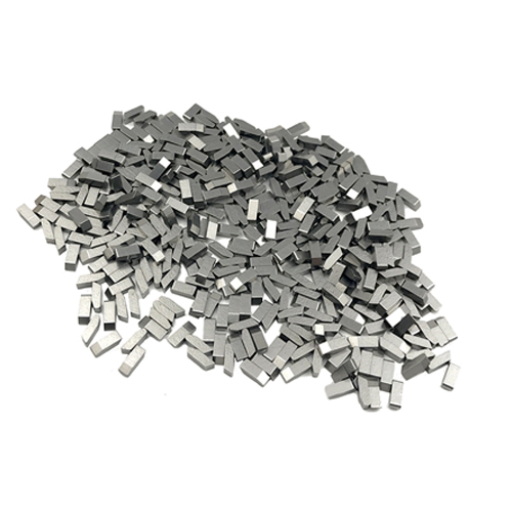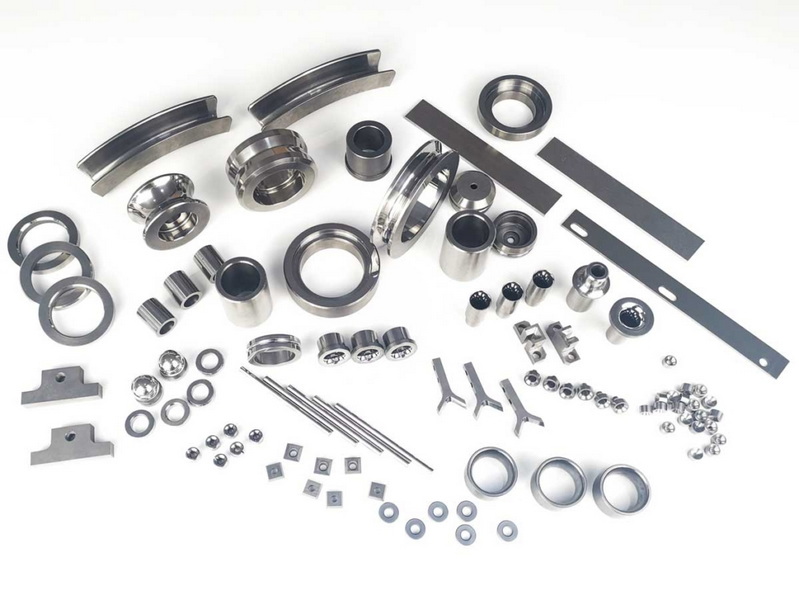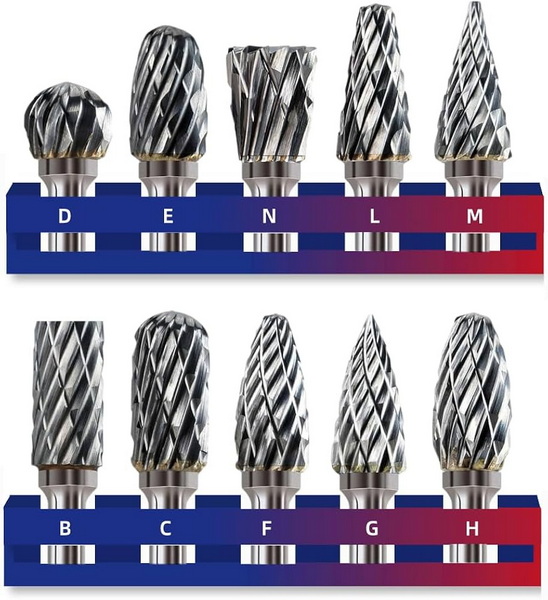Content Menu
● Introduction to Tungsten
● Introduction to Tungsten Carbide
● Composition and Structure
>> Tungsten
>> Tungsten Carbide
● Physical Properties
>> Hardness and Brittleness
>> Density
>> Thermal Properties
● Applications
>> Tungsten
>> Tungsten Carbide
● Manufacturing Process
>> Tungsten
>> Tungsten Carbide
● Advancements in Tungsten Carbide
● Industrial Applications of Tungsten Carbide
● Cost and Availability
● Environmental Considerations
● Future Developments
● Comparison of Tungsten and Tungsten Carbide in Specific Applications
>> Electrical Contacts
>> Cutting Tools
>> Aerospace Industry
● Conclusion
● FAQ
>> 1. What is the primary difference in hardness between tungsten and tungsten carbide?
>> 2. What are the typical applications of tungsten carbide?
>> 3. How does the density of tungsten compare to tungsten carbide?
>> 4. What binders are commonly used in tungsten carbide?
>> 5. Why is tungsten carbide more expensive than tungsten?
● Citations:
Tungsten and tungsten carbide are two materials often confused with each other due to their similar names and shared origins from the element tungsten. However, they exhibit distinct properties and applications, making them suitable for different industrial uses. In this article, we will delve into the differences between tungsten and tungsten carbide, exploring their compositions, properties, and applications.

Introduction to Tungsten
Tungsten, with the chemical symbol W, is a naturally occurring metallic element known for its high density and exceptional hardness. It has the highest melting point among all metals, reaching 3,422°C (6,192°F), and is used in various applications such as electrical contacts, heating elements, and alloying steel.
Tungsten Properties:
- Density: 19.3 g/cm³
- Melting Point: 3,422°C (6,192°F)
- Hardness: Approximately 7.5 on the Mohs scale
- Applications: Electrical contacts, heating elements, alloying steel
Introduction to Tungsten Carbide
Tungsten carbide, with the chemical formula WC, is a compound made from tungsten and carbon atoms. It is renowned for its extreme hardness, ranking between 9 and 9.5 on the Mohs scale, making it nearly as hard as diamond. This property, combined with its high melting point of 2,870°C (5,198°F), makes tungsten carbide ideal for cutting tools, wear-resistant parts, and other industrial applications.
Tungsten Carbide Properties:
- Density: Approximately 15.6 g/cm³
- Melting Point: 2,870°C (5,198°F)
- Hardness: Approximately 9 to 9.5 on the Mohs scale
- Applications: Cutting tools, wear-resistant parts, mining, construction
Composition and Structure
Tungsten
Tungsten is a pure metallic element with a high atomic weight and density. Its crystal structure is body-centered cubic, contributing to its high melting point and hardness.
Tungsten Carbide
Tungsten carbide is composed of tungsten and carbon atoms arranged in a hexagonal crystal structure. This structure enhances its hardness and wear resistance, making it suitable for demanding industrial applications.
Physical Properties
Hardness and Brittleness
Tungsten carbide is significantly harder than tungsten, with a Mohs hardness of 9 to 9.5 compared to tungsten's 7.5. However, this increased hardness comes at the cost of brittleness. Tungsten carbide is more prone to cracking under impact, whereas tungsten is more ductile and can withstand heavier blows without fracturing.
Density
Tungsten is one of the densest metals, with a density of 19.3 g/cm³. Tungsten carbide is less dense, at approximately 15.6 g/cm³, but still much denser than steel.
Thermal Properties
Both materials have high melting points, with tungsten being the highest among metals. Tungsten carbide's melting point is slightly lower but still exceptionally high, making both materials suitable for high-temperature applications.
Applications
Tungsten
Tungsten is used in applications requiring high melting points and density, such as electrical contacts, heating elements, and alloying steel. Its high density also makes it useful for counterweights and ballast materials.
Tungsten Carbide
Tungsten carbide is widely used in cutting tools, wear-resistant parts, and other industrial applications where extreme hardness and wear resistance are necessary. It is also used in mining, construction, and oil and gas industries.

Manufacturing Process
Tungsten
Tungsten is typically extracted from tungsten ores and then processed into various forms such as powders or ingots. It can be alloyed with other metals to enhance its properties.
Tungsten Carbide
Tungsten carbide is manufactured by combining tungsten powder with carbon and then sintering the mixture at high temperatures. Metallic binders like cobalt or nickel are often added to improve toughness and durability.
Advancements in Tungsten Carbide
Recent advancements in tungsten carbide have focused on improving its wear resistance and cutting efficiency. Techniques such as nanocoating and advanced sintering methods have been developed to enhance its properties. Additionally, research into new binder materials aims to reduce the brittleness of tungsten carbide while maintaining its hardness.
Industrial Applications of Tungsten Carbide
Tungsten carbide's unique properties make it indispensable in various industries:
- Mining and Construction: Used in drill bits and other cutting tools due to its high wear resistance.
- Oil and Gas: Utilized in drilling equipment for its ability to withstand extreme conditions.
- Aerospace: Applied in wear-resistant components and cutting tools for its durability.
Cost and Availability
Tungsten carbide is generally more expensive than tungsten due to its complex manufacturing process and the addition of binders. However, its superior hardness and wear resistance make it a valuable material for demanding applications.
Environmental Considerations
The extraction and processing of tungsten have environmental implications, including potential pollution and resource depletion. Efforts to recycle tungsten and improve manufacturing efficiency are underway to mitigate these impacts.
Future Developments
Future developments in tungsten and tungsten carbide are expected to focus on sustainability and efficiency. Innovations in recycling technologies and the use of alternative binders could reduce environmental impacts while maintaining performance.
Comparison of Tungsten and Tungsten Carbide in Specific Applications
Electrical Contacts
Tungsten is preferred for electrical contacts due to its high melting point and conductivity. However, tungsten carbide is not typically used in this application due to its lower conductivity.
Cutting Tools
Tungsten carbide is the material of choice for cutting tools because of its exceptional hardness and wear resistance. Tungsten, while hard, lacks the necessary wear resistance for such applications.
Aerospace Industry
Both materials are used in the aerospace industry, with tungsten being used for its density and high melting point, and tungsten carbide for its wear resistance in cutting tools and components.
Conclusion
In conclusion, while both tungsten and tungsten carbide derive from the element tungsten, they have distinct properties and applications. Tungsten is a dense metal with a high melting point, suitable for electrical and thermal applications. Tungsten carbide, on the other hand, is a compound renowned for its extreme hardness and wear resistance, making it ideal for cutting tools and wear-resistant parts.

FAQ
1. What is the primary difference in hardness between tungsten and tungsten carbide?
Tungsten carbide is significantly harder than tungsten, with a Mohs hardness of 9 to 9.5 compared to tungsten's 7.5.
2. What are the typical applications of tungsten carbide?
Tungsten carbide is widely used in cutting tools, wear-resistant parts, mining, construction, and other industries requiring high wear resistance.
3. How does the density of tungsten compare to tungsten carbide?
Tungsten is denser than tungsten carbide, with a density of 19.3 g/cm³ compared to tungsten carbide's 15.6 g/cm³.
4. What binders are commonly used in tungsten carbide?
Cobalt and nickel are the most common binders used in tungsten carbide to enhance its toughness and durability.
5. Why is tungsten carbide more expensive than tungsten?
Tungsten carbide is more expensive due to its complex manufacturing process and the addition of metallic binders like cobalt or nickel.
Citations:
[1] https://cowseal.com/tungsten-vs-tungsten-carbide/
[2] https://en.wikipedia.org/wiki/Tungsten_carbide
[3] https://www.linde-amt.com/resource-library/articles/tungsten-carbide
[4] https://www.vecteezy.com/free-photos/tungsten
[5] https://www.alamy.com/stock-photo/tungsten-carbide.html
[6] https://konecarbide.com/tungsten-vs-tungsten-carbide-differences-explained/
[7] https://shop.machinemfg.com/tungsten-vs-tungsten-carbide-key-differences/
[8] https://periodictable.com/Elements/074/index.html
[9] https://www.linkedin.com/pulse/tungsten-vs-carbide-whats-difference-haijun-liu
[10] https://www.stevengdesigns.com/blogs/news/the-difference-between-tungsten-and-tungsten-carbide
[11] https://carbideprocessors.com/pages/carbide-parts/tungsten-carbide-properties.html
[12] https://www.cncsparetools.com/new/Difference-between-solid-carbide-and-Tungsten-steel.html
[13] https://www.imetra.com/tungsten-carbide-material-properties/
[14] https://www.azom.com/properties.aspx?ArticleID=1203
[15] https://va-tungsten.co.za/pure-tungsten-vs-tungsten-carbide-whats-the-difference/
[16] https://www.hitechseals.com/includes/pdf/tungsten_carbide.pdf
[17] https://www.tungstenworld.com/pages/tungsten-vs-tungsten-carbide
[18] https://rrcarbide.com/understanding-tungsten-carbide-composition-uses-and-expertise/
[19] https://www.aemmetal.com/news/tungsten-vs-tungsten-carbide-guide.html
[20] https://www.sciencedirect.com/topics/physics-and-astronomy/tungsten-carbide
[21] https://www.vanswedenjewelers.com/en-au/blogs/education-ideas/tungsten-vs-tungsten-carbide-wedding-bands
[22] https://pubchem.ncbi.nlm.nih.gov/compound/Tungsten-carbide
[23] https://touchwood.biz/blogs/southafrica/what-is-the-difference-between-pure-tungsten-and-tungsten-carbide
[24] https://stock.adobe.com/search?k=tungsten+carbide
[25] https://www.istockphoto.com/photos/tungsten-carbide
[26] https://www.istockphoto.com/photos/tungsten-metal
[27] https://stock.adobe.com/search?k=carbide
[28] https://stock.adobe.com/search?k=tungsten
[29] https://www.istockphoto.com/photos/tungsten-carbide-drill-bits
[30] https://www.pinterest.com/pin/1051520213002478040/
[31] https://www.istockphoto.com/photos/tungsten-image
[32] https://www.freepik.com/free-photos-vectors/tungsten-carbide
[33] https://forums.tripwireinteractive.com/index.php?threads%2Ftungsten-vs-tungsten-carbide.101174%2F
[34] https://www.gettyimages.com.au/photos/tungsten-metal
[35] https://www.linkedin.com/pulse/tungsten-vs-carbide-whats-difference-zoe-tungsten-carbide-dies-
[36] https://www.linkedin.com/pulse/differences-between-tungsten-carbide-shijin-lei-1c
[37] https://periodictable.com/Elements/074/pictures.html
















